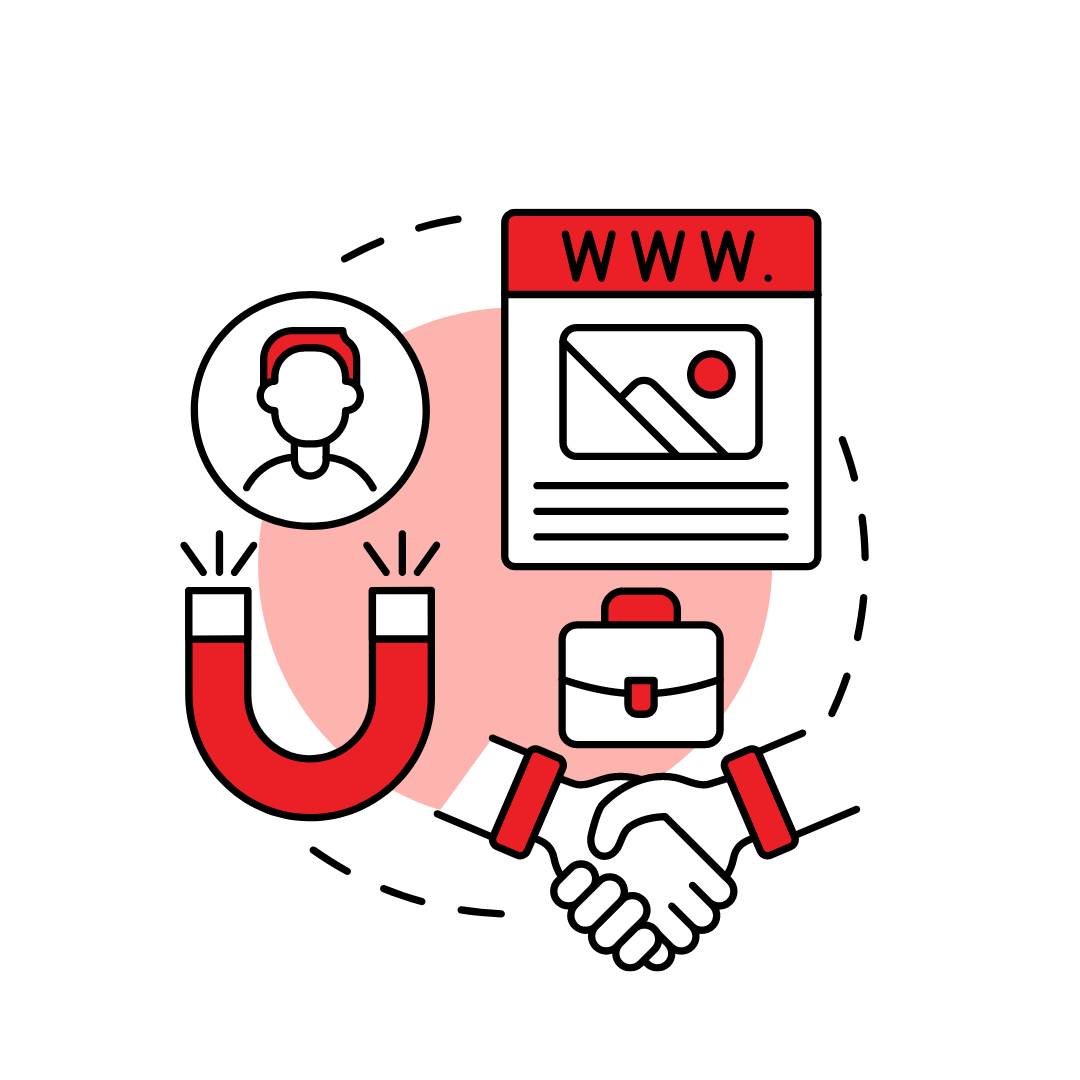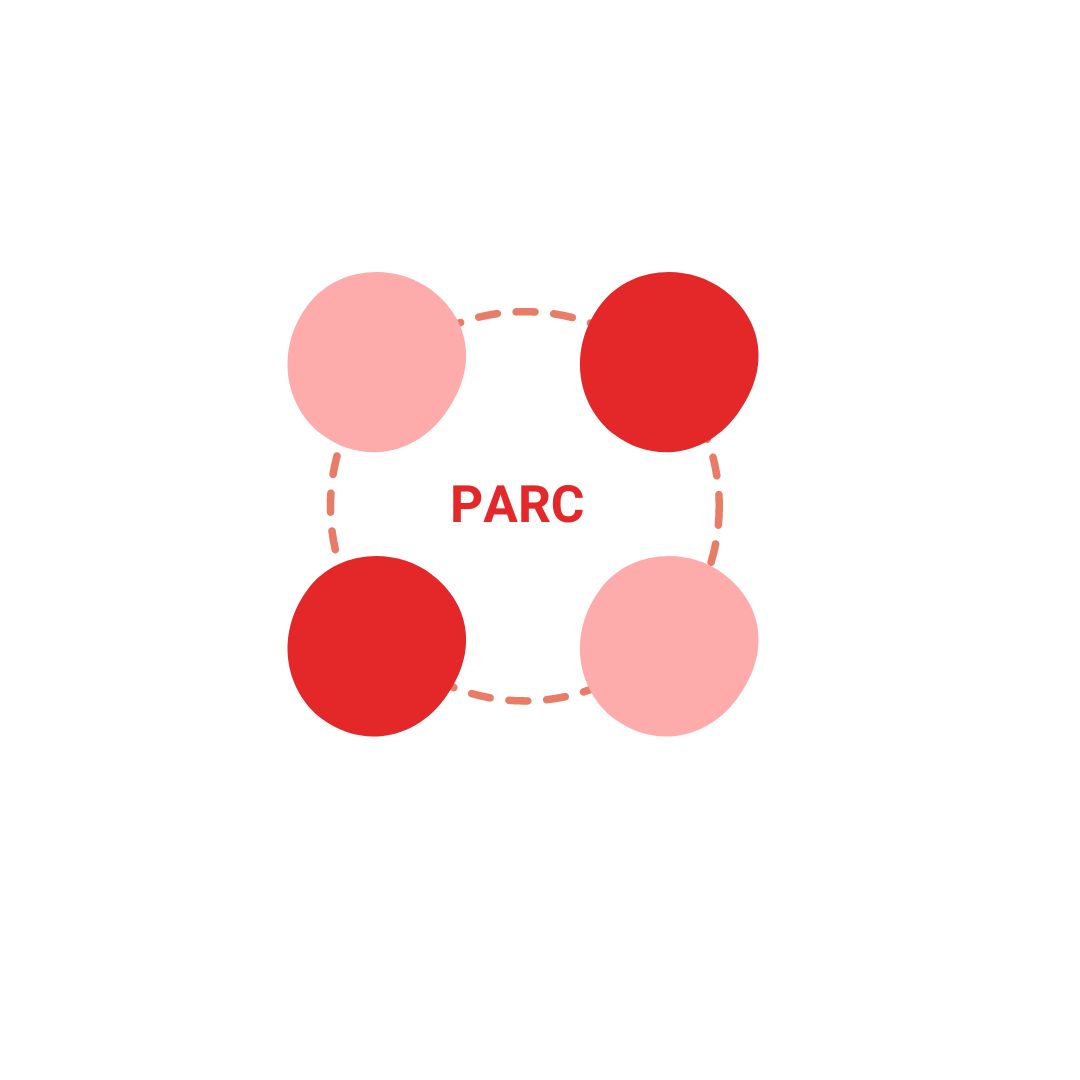What is Lead Nurturing
By lead nurturing we refer to a process that you can follow to build and maintain relationships with potential clients. By relationships, what is meant here is simply not one that is built based on a template. Meaningful lead nurturing requires time, effort and dedication. Only a thoughtful approach which stretches over a considerable period can help to nurture a lead.
Lead nurturing is an important step in lead management. A part of lead nurturing also spreads into educating the to-be-customer about your products/services and how it can solve their problem.
Lead nurturing is a process that involves both the sales and marketing teams of your organization. It revolves around not only your sales targets but also your customers’ needs.
Why Lead Nurturing Is Important?
Lead nurturing is important because it is a proven tactic to drive high-quality opportunities into the sales pipeline. Some important derivations of using lead nurturing are:
1: Helps to Build a Relationship with the Customer
Lead nurturing is a process by which you can build relationships with your prospects so that you can earn the business they will bring when they are ready. This marketing effort is focused on engaging with your leads and customers in a way to build relationships with them and therefore encourages them to move toward a specific action.
2: Increases Average Order Value (AOV)
An Annuitas research study points to the fact that nurtured leads stand a 47% higher chance of bringing higher average order value than deals that are not nurtured. Therefore, if you’re looking to generate higher order values, building stronger relationships with your buyers via lead nurturing
3: Reduces Customer Acquisition Cost
Customer acquisition costs include the sales and marketing costs and other operational costs that are incurred for acquiring a customer. The customer acquisition process includes lead generation. However, lead generation refers to bringing new people into your funnel, customer acquisition focuses is the process of moving these leads through the buyer journey. Lead nurturing strategy can help you to nurture leads that did not convert when you acquired them. The costs are inherently reduced when you use different lead generation strategies which influences the decision of customers.
4: Shortens the Sales Cycle
Modern customers take more time to explore their buying options and to educate themselves, before making a decision. As a result of this, today’s sales cycles are longer, and this is the reason why it is important to nurture leads.
Lead nurturing also involves educating your customers about the products and services that you can offer and how they will help them solve their current challenges. This helps customers to make more informed decisions, allows your business to adapt to the new environment, and shortens your sales cycle. This may give you a better chance of converting more leads into buyers and long-term customers.
5: Builds Loyal Customer Base
The basic premise of lead nurturing is the process of bringing in leads that are not ready yet to buy. Successful lead nurturing looks into the needs of the buyer, based on their profiles (using characteristics, such as title, role, industry, and so on) and where they are located in the buying process. If a positive relationship is the result of lead nurturing, which is all about building relationships with would-be customers, they will likely be loyal customers once they decide to buy.
6: Increases Customer Lifetime Value (cLTV)
Customer lifetime value (cLTV) is a useful metric that indicates what a business can earn from a customer over the entire course of their relationship. Though lead nurturing is the first step in the customer acquisition process, this should last well past the first step in that it should help create a loyal customer base. Customers should be informed about a product when their needs are high. This gets them to buy and by imparting knowledge about the product as part of the led nurturing process, the CLTV is likely to become and stay high.
7: Upsell and cross-sell
Lead nurturing is the process of developing on-going relationships with to-be customers at every stage of the sales funnel. It involves personalised communication being sent to the customers based on their behaviours and activities.
If you are dealing with former customers, lead nurturing helps to improve that specific customer’s awareness of your company’s products/services and the latest offers. Studies indicate that lead nurturing allows for bigger deal sizes. Because of this, there is potential to enhance the number of sales and the value of the sales. It also allows you to discover more up-sell and cross-sell opportunities to your customers.
How to Create an Effective Lead Nurturing Strategy?
Creating great relationships with customers and maintaining them is the success mantra today for any business. Being present on the media channels where your customers are present and making an effort to engage with them heightens the chances of developing and maintaining relationships with them. Statistics have it that only close to 35% of B2B marketers are ready with a lead nurturing strategy. So if you have one, you are likely to have a competitive advantage.
If you do not yet have a lead nurturing strategy for your organization, now is the best time to get started. This takes both time and effort.
1. Segment the audience based on customer persona
It is common knowledge that it is difficult for a business to survive without a steady stream of qualified leads. It is equally important to nurture to-be clients through every stage of their buying journey. In any inbound marketing, it is important to know who your leads are, what their problems are likely to be and how your product/service is going to help solve that challenge. This is where customer personas become important.
As it is difficult to create content suitable for every individual lead, it is practical to segment leads into groups having similar characteristics. Then you can create content that aligns with the needs of that group.
A Segmented persona set is a fictional composite of a segment of your to-be customers who have shared interests and common concerns and problems. As an example, real estate would have buyer and investor personas. The former would comprise end-user customers ready to purchase their apartments to move into them and live there and the latter would only have a commercial interest in the properties they visit.
2. Define Communication Specific to a Segment
Lead nurturing is about building relationships. Therefore, the basic idea is to listen to them. This means that in terms of content, one size will not fit all. Strategically nurturing your leads with targeted content will only seek to improve the results.
Once the persona segmentation is done, it is important to create an assortment of content that you can use to target each persona group depending on their interests. In the above example, you can create content about the lifestyle and location advantages of a property to the buyer category and create content related to the appreciation values of the property and how the trend is likely to continue for the investor category.
3. Define Communication based on different stages of their journey
Lead nurturing is all about guiding your buyer prospects through every stage of the buying journey. It is about how to vary and present appropriate content to the customer at different stages of the buying journey. For a prospect that has just become your lead, the content may be tailored to provide the required awareness.
Continuing with the same example provided above, for a buyer-to-be, the content would be more about the information on the different completed projects, site visit, customer testimonials, awards received by the builder, etc. For a person on a different stage of the buying journey, say, one who has already purchased the apartment, the communication can relate to the apartment rules, waste disposal information, etc.
Different Lead Nurturing Strategies
Lead nurturing is a critical process and different strategies can be used to earn your potential customers’ trust so that they turn into long-term clients.
1: Specific communication for each stage of the funnel
The awareness stage is when the leads are brand new. The lead nurturing strategies at this stage are more about getting to know the problems of your clients–to–be rather than talking about your products/services. The key here is listening rather than doing the talking. Getting to know their habits and behaviours and procuring their email addresses are crucial in this stage. You should get them to trust you by providing credible information.
The consideration stage is when the leads discover that they have challenges that they would want to solve. In this stage, the content provided should be more authoritative and should present advantages if they choose your product/service. You have to personalize and send content to each of the buyer persona groups. The use of marketing automation software would help in this stage.
In the conversion and retention stage, it is all about what kind of a framework you have provided to your prospects to help them say “yes” to you. By this time, there should have been a minimum number of emails that you should have sent to your client-to-be. Testimonials and positive reviews specific information to attract the buyer add to the social proof, which is one of the best ways to convince your prospect.
Frequency of outbound emails, getting your communications to the client via multiple touch-points, timely follow-ups, and use of rewards and loyalty programs will help in retaining your existing clients for the longer term.
2: Lead Scoring
Lead scoring is all about qualifying your leads based on their preferences, habits and behaviours. This strategy is best for prioritizing content for your leads. It also helps you to decide the current position of the prospect in the buyer journey. Their reactions to our marketing efforts can also be identified.
3: Retargeting
Though many visitors hit your website, conversions may be lacking. This may be because many are not yet ready. Serving personalized content to this group can serve to keep your brand on the top of their minds.
In this stage, a good idea is to use multichannel marketing strategies. You can use multiple channels to distribute content to your prospects to be such as via emails, mobile apps, and social media. Social media channels like Facebook, LinkedIn, Twitter, and Instagram allow you to create custom audiences by allowing you to upload your retargeting lists.
Thereafter, you can serve appropriate ad content to them. You can also create a file having customer data and upload it to Google ads to incorporate retargeting into your campaigns. Adding the right incentives can bring back the right customers to say “yes” now.
4: Setting Up a Drip Campaign
Drip campaigns and lead nurturing are two separate types of marketing tactics. However, they are also similar in certain ways. Whereas drip marketing is a more general and ongoing activity, lead nurturing is usually positioned for a specific persona or group. Drip campaign emails are sent based only on time.
However, you can always set up a nurturing drip campaign. You can have different drip campaigns for different groups. These drip campaigns can be set up for converting new leads.
With a lot of focus, these can help to better the conversion rate. These drip emails can be geared towards collecting details of challenges that your prospects face, and other drip campaigns explaining how your product or service could help them meet their challenges.
5: Timely Follow Up
Follow-up calls, as most businesses would fully agree, are very beneficial. However, they should be done on time for the best outcomes.
In the digital world today, follow-up emails can be automated helping you to reach out to large groups of prospects. So, sending timely follow-up emails is not an issue anymore. You can send the follow-up email based on their browsing behaviour (as crm can track different pages visited by customers) and according to their persona.
This serves to convert inbound leads into qualified leads who would turn into customers. The odds of a prospect converting into a customer are exponentially higher if an appropriate email reaches them when they need your product or service. If your follow-up is missing, they would buy the same product from your competitor.
6: Sharing Valuable Content
Sharing content is always a crucial component of your lead nurturing strategy. This means you should leverage content throughout the buyer’s journey (in every stage). This is the responsibility of both the sales and marketing teams to be in charge of lead nurturing.
It is important to note that the content should be personalized and with concern to solve the prospect’s challenges. These how-to videos, informative blogs, dos and don’ts, ebooks, emails, etc., should be served according to the customer’s needs and at the correct point in time.
You should also take care not to send large amounts of content to the prospect. It can put them off. You should keep lead maturity in mind when sending content to your prospect.
7: Setting up Marketing Automation Tool
If you want to leverage the information that you have in hand about our prospects-to-be and you want to deliver personalized marketing content at scale, then setting up a marketing automation tool will help. You can try Hubspot, Marketo, Whatsapp for Business and other tools to target various goals.
Marketing automation tools would help you to collect lead preferences, drive traffic, encourage free trial users to log in, help in building trust in the brand, educate your leads, and increase conversions.
Automation helps you to deliver relevant communication that would help to nudge leads in their pre-purchase period. Marketing automation tools would also help you deliver a consistent experience for all the leads. This would help you to easily determine what works and what does not.
8: Lead Nurturing Strategy For Ecommerce
In today’s world of online shopping, new leads may log in to seek information on a product they want but may abandon the cart for various reasons. However, a part of the lead nurturing strategy is to set up marketing automation and send an abandoned cart email to leads. This would act as a prompt and get the customer to return to the site to complete the purchase.
Yet another part of lead nurturing is sending post-purchase emails. These are incredibly powerful and help to drive both conversions and sales. In most cases, post-purchase emails help to convert new customers into recurring customers. They help to build trust and nurture your relationship with your lead.
Once you have analysed your customer personae and their buying behaviours, your emails can recommend other similar products. This will help you to nurture the lead and is likely to lead to increased conversions.
9: Creating Content Which Drives Engagement
Engaging or interactive content is a great way of increasing engagement and lead nurturing. The customer usually feels more in control when interacting with you. The interaction can be via quizzes, polls surveys and other methods.
You can generate leads as well as nurture them. Interaction allows you to derive and leverage value-based information when the customer engages with your content. It also increases their trust in the brand and thus improves prospects of conversion. Given below are a couple of interactive content that has worked well for the brands.
Key Metrics to Measure for Lead Nurturing Strategy
1: Average Order Value
The average order value refers to the amount spent by a customer when placing an order for products/services from your business. This helps you understand how customers shop on your site.
AOV can be improved by cross-selling, providing product recommendations, upselling, etc. all of these are part of the lead nurturing and thus the AOV value can give you an idea about its effects.
2: Customer acquisition cost
Over time, with lead nurturing the cost of acquiring a customer should decrease because the leads that pass through the funnel from the top are nurtured to the bottom before they are converted. This metric can be checked monthly to ensure that your customer acquisition costs are still efficient.
3: Lifetime Value (LTV)
The LTV of a customer is an important lead metric that marketers can measure. This is a measure of the revenue that a single customer will generate throughout their association with your business.
CLTV is influenced by customer service, product knowledge and recommendations, and upselling among other factors. A higher CLTV shows that the demand generation funnel of the business is simply not turning leads into customers but also nurturing them in a way to turn them into higher-value customers.
Additional Resources: Master Guide to Customer Lifetime Value
4: Open Rate
The email open rate is a metric that should be measured by every marketer. It is so important that any email service provider automatically includes this in their dashboards. This number shows you the actual number of people that clicked to open our emails. This number should show increased values when lead nurturing is effective.
5: Email Click Through Rate (Email CTR)
This metric tells you to click through to any offer or promotion that you provide through email. You can measure this metric by following up on the links that you provide in your email. A Higher email CTR happens when you nurture leads enough and they think your offers are attractive enough.
Conclusion
Lead nurturing has turned out to be one of the most tracked growth challenges for any business organization. However, it is simply not enough to just have killer lead nurturing strategies for an organization. It is important to act on the marketing analytics data at the right time and in the right manner to make lead nurturing have a positive effect on your business.








